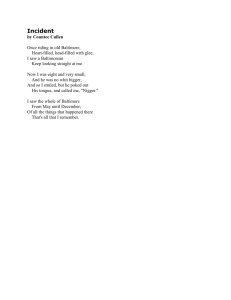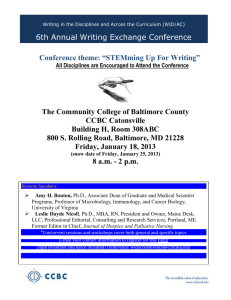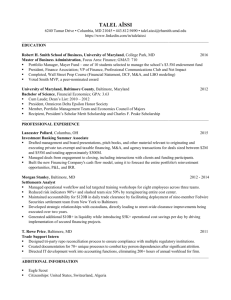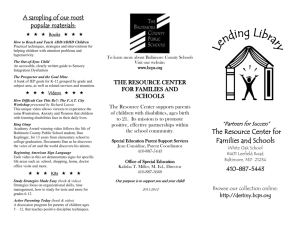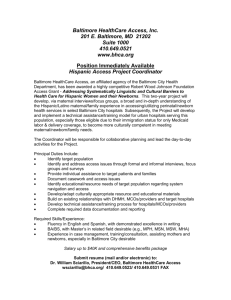Abstract Creative Project: Student: Degree:
advertisement
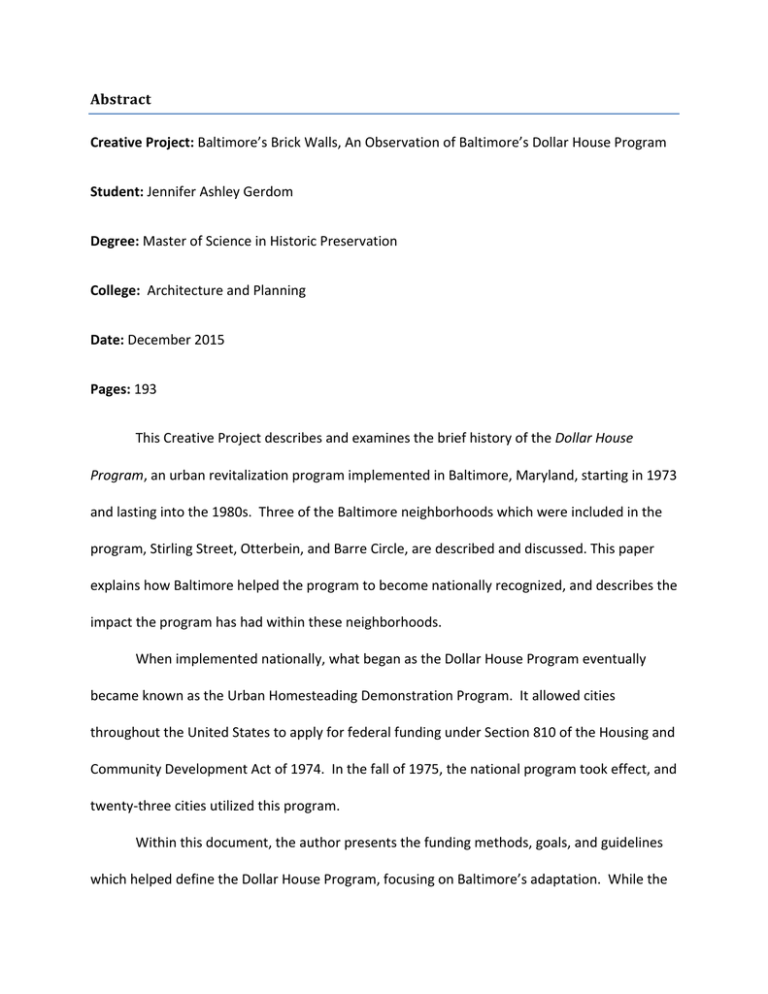
Abstract Creative Project: Baltimore’s Brick Walls, An Observation of Baltimore’s Dollar House Program Student: Jennifer Ashley Gerdom Degree: Master of Science in Historic Preservation College: Architecture and Planning Date: December 2015 Pages: 193 This Creative Project describes and examines the brief history of the Dollar House Program, an urban revitalization program implemented in Baltimore, Maryland, starting in 1973 and lasting into the 1980s. Three of the Baltimore neighborhoods which were included in the program, Stirling Street, Otterbein, and Barre Circle, are described and discussed. This paper explains how Baltimore helped the program to become nationally recognized, and describes the impact the program has had within these neighborhoods. When implemented nationally, what began as the Dollar House Program eventually became known as the Urban Homesteading Demonstration Program. It allowed cities throughout the United States to apply for federal funding under Section 810 of the Housing and Community Development Act of 1974. In the fall of 1975, the national program took effect, and twenty-three cities utilized this program. Within this document, the author presents the funding methods, goals, and guidelines which helped define the Dollar House Program, focusing on Baltimore’s adaptation. While the program’s guidelines proved it to be well-structured, they also allowed officials representing the cities involved to put some of their own ideas into practice. In order to make this program affordable, Baltimore found that not only was federal funding necessary, but funding from the city would also be crucial in the efforts to incentivize middle-income suburban families to move into the homesteads. Key components of both the national program and that of Baltimore, which helped make urban homesteading possible, are discussed. The author found the ideologies of urban pioneering and sweat equity, for example, were essential to the process of building communities and the establishment of pride in home ownership throughout the rehabilitation efforts. Each case study will review its neighborhood’s history and their implementation of the Dollar House Program, as well as provide a present-day assessment of the area. This will help to establish the impact of the overall program on Baltimore. At the conclusion of the presentation regarding the Dollar House Program, the author presents her doubts and criticisms pertaining to the program, and also conveys the fate of urban homesteading under the 1974 act. The degree of success the program achieved is discussed at the neighborhood and city levels, and is explored through topics including current market values, past resident income levels, and the city’s dedication to the program and its homesteaders. Baltimore’s efforts to manage abandoned properties after the Dollar House Program was terminated are then examined. These observations ultimately lead to the question of whether or not the program could be reestablished in modern-day Baltimore.
